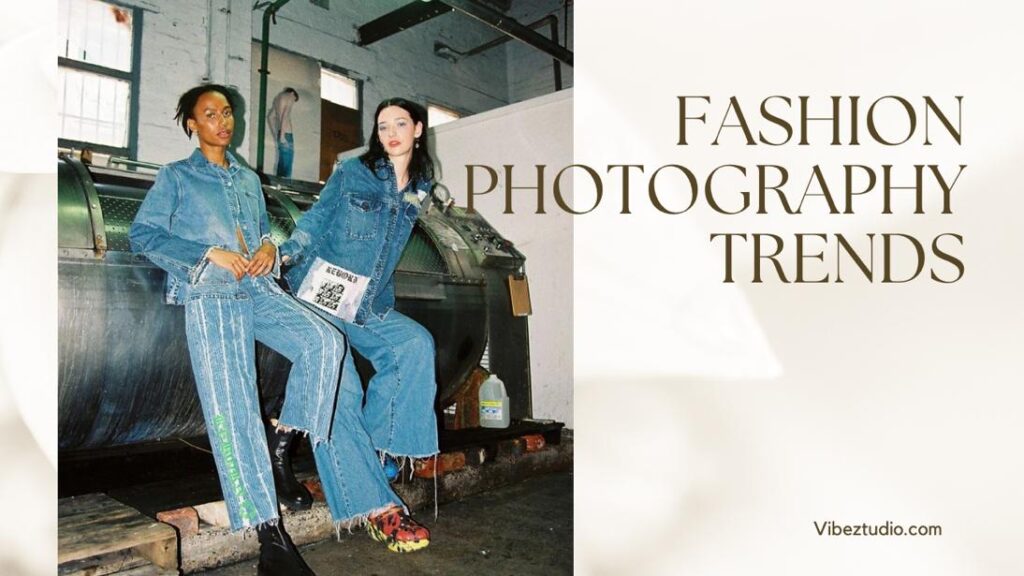Based on current trends, several new photography styles and techniques are expected to grow in popularity in 2024. Mobile photography, where high-quality photos are taken with smartphones, will likely continue rising as phones improve their camera capabilities. Video and motion content is also gaining traction, so shooting short videos and stop-motion photography may trend more. Sustainability will also influence photography – environmental and socially aware techniques may grow. Film photography could see a resurgence as younger generations rediscover the appeal of physical prints and analog styles.
Storytelling through images will also trend – mixing photos with words, themes and narratives to communicate ideas differently. UGC or user-generated content may empower more amateur photographers to contribute to stock libraries. With social consciousness and visual storytelling on the rise, photographers in 2024 will likely continue blurring lines between art and activism.
Hello! I’m Ozzy from Vibeztudio Photography Dubai.
Come with me as we check out the cool fashion photo styles for 2024, mixing new ideas with classic beauty.
Fashion Photography Trends 2024
Breaking Stereotypes with Diverse Models
The fashion industry is witnessing a transformative shift towards inclusivity, with a growing emphasis on featuring models of all ethnicities, body types, and abilities. This move not only reflects the diversity of consumers but also challenges the conventional beauty standards that have long dominated fashion photography.

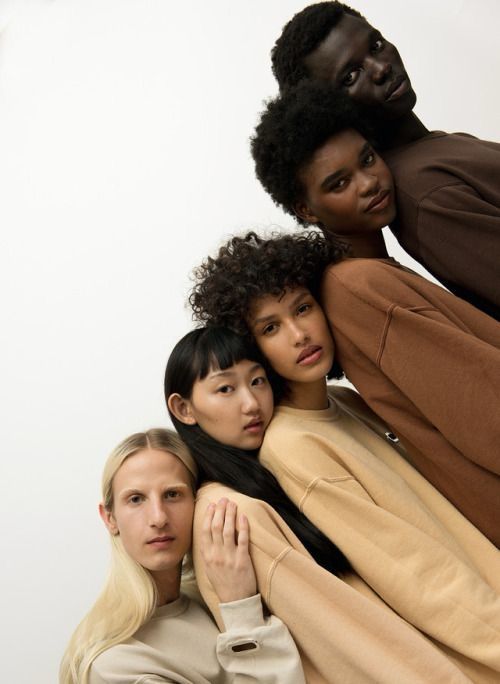

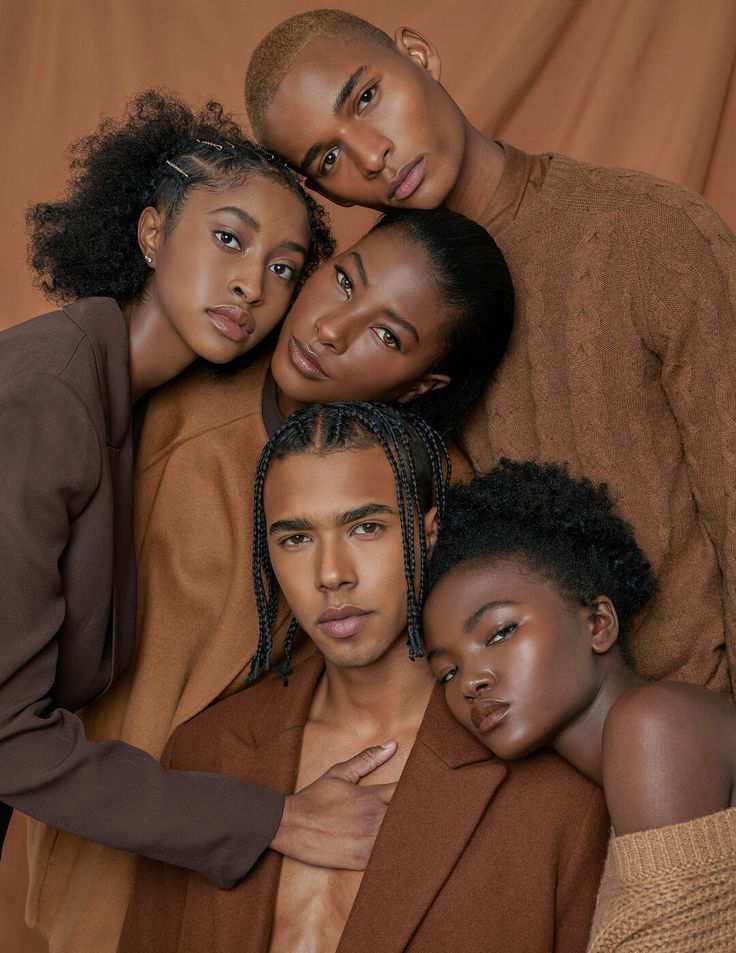

- Embracing a wide range of models showcases the industry’s commitment to representing the real world, where beauty is not a monolith but a spectrum of unique traits and stories.
- By breaking stereotypes, photographers and brands are crafting a more authentic and relatable narrative that resonates with a broader audience.
Related post: Hire A wedding Photographer in Dubai
Best Fashion Photographer In Dubai
Looking to create stunning images for your next fashion campaign or portfolio? Look no further than Vibeztudio, Dubai’s leading specialists in professional fashion and commercial photography. With years of experience our creative collective of photographers, stylists and creatives can bring your fashion visions to vivid life. Our portfolio highlights our expertise in mood boarding, lighting, model direction and image editing.
Reach out today to discuss your project needs and book your photoshoot – we guarantee sharp, stylish results that will take your brand to the next level. Don’t delay – contact us now to secure your booking and make the most of Dubai’s picturesque backdrops.
Email: admin@vibeztudio.com
Inclusive Sizing and Adaptive Fashion in Photography

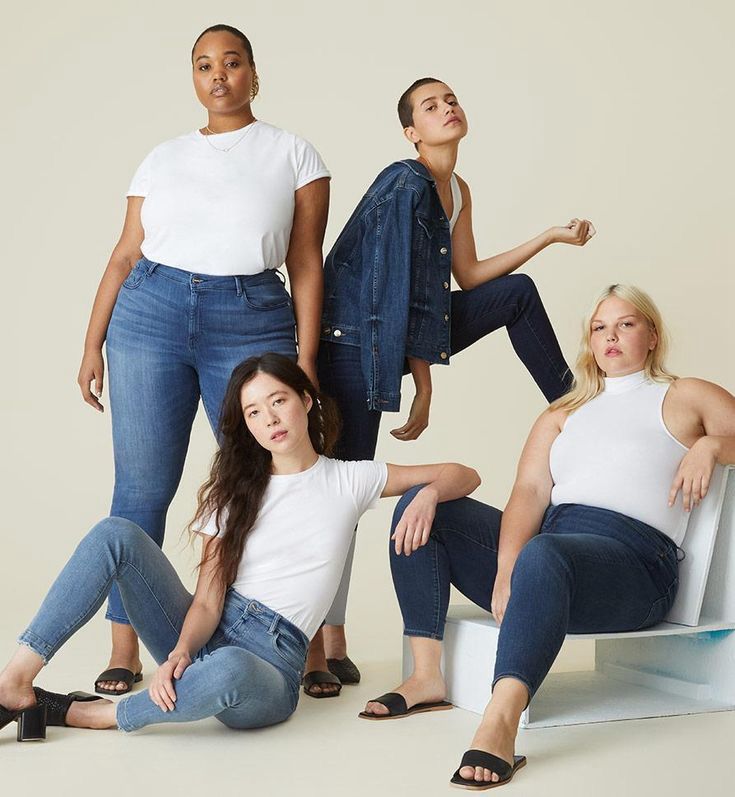
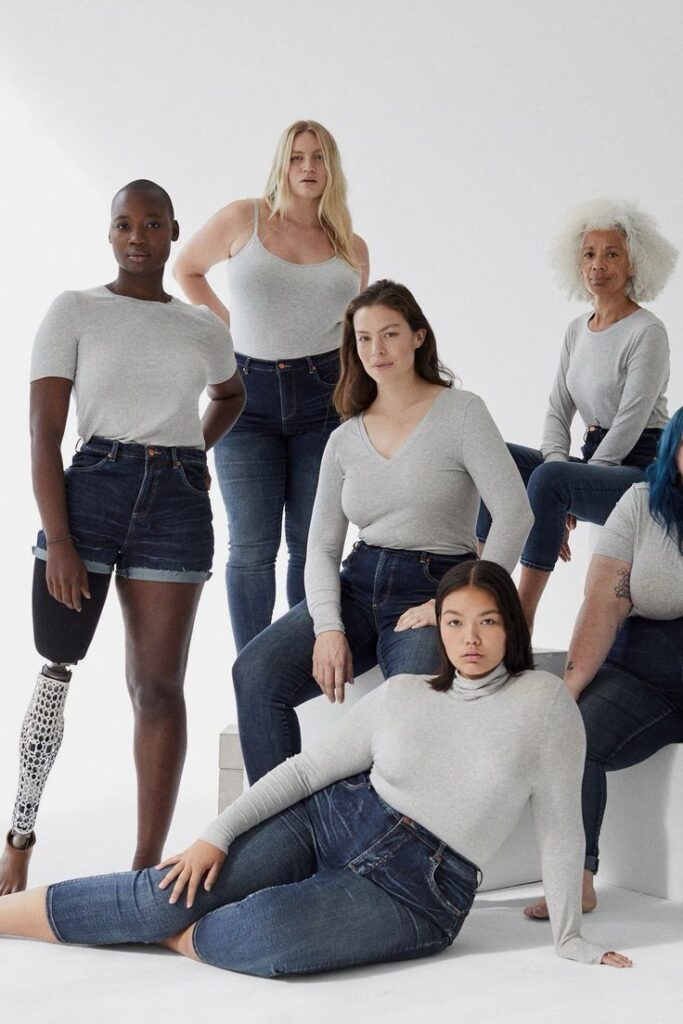



The fashion industry is witnessing a transformative era where inclusive sizing and adaptive fashion are not just buzzwords but essential elements of fashion photography. Brands are increasingly showcasing a range of body types, abilities, and sizes, reflecting the diversity of their consumers.
Adaptive fashion caters to the needs of individuals with disabilities, offering functional yet fashionable clothing options. This inclusivity is not only a moral imperative but also a market necessity, as it resonates with a broader audience.
- Design Features: Magnetic closures, adjustable hems, and easy-grip zippers.
- Fabric Choices: Stretchable, durable materials that accommodate various body shapes.
- Innovative Solutions: Velcro seams and discreet openings for medical access.
Embrace diversity in every aspect of fashion photography to create imagery that is truly representative of society. This not only fosters a sense of belonging but also empowers individuals of all backgrounds to see themselves in the fashion narrative.
Celebrating Age Diversity on the Fashion Front
The fashion industry is increasingly recognizing the beauty and relevance of age diversity, showcasing models who represent the full spectrum of life’s stages. By celebrating the elegance and sophistication that comes with age, brands are challenging the youth-centric ideals that have long dominated fashion imagery.
Age diversity is not just about representation; it’s about valuing the stories, experiences, and timeless style that older models bring to the table. These models resonate with a broader audience, reflecting the reality that style and fashion are not confined to any particular age group.
Tips for embracing age diversity in fashion photography:
- Highlight the unique beauty of each age group
- Collaborate with models who have a strong presence and life experience
- Create campaigns that celebrate intergenerational styles
Embrace the narrative that every age has its own beauty and fashion is a timeless pursuit. Let’s move beyond stereotypes and recognize the enduring appeal of mature elegance.
Eco-Conscious Fashion Photography
Highlighting Ethical Fashion Brands
Eco-conscious fashion is becoming an important theme within the industry, and photography is reflecting this sustainable trend. Photographers are focusing on celebrating slow, ethical and environmentally-sound fashion through their creative visions. Shoots emphasize the stories behind fabrics – featuring organic cottons, repurposed textiles and natural dyes. Models are captured enjoying nature or engaged in acts of environmental stewardship to personify green values.
Digital alterations that used to perfect appearances are now avoided, celebrating natural beauty and imperfections. Photographers collaborate with brands creating closed-loop systems, reusing materials endlessly. Symbolism of the natural world through landscape backdrops and foliage bring imagery back to its roots. Editorials highlight fashion’s impact and highlight alternatives – advocating for longevity over fast trends. By featuring ethical practices and green lifestyles, eco-fashion photography aims to both document and influence more mindful attitudes in the industry.
- Ethical sourcing of materials
- Fair labor conditions
- Transparency in production processes
- Commitment to reducing waste
Remember, every fashion shoot that features an ethical brand is a statement in support of a healthier planet and more equitable industry practices.
Upcycling and Sustainability in Set Design
Upcycling and sustainability concerns are increasingly influencing set design for fashion photography. Photographers are utilizing abandoned locations and incorporating recycled, upcycled, and eco-friendly materials into their sets to create aesthetically pleasing yet earth-conscious backdrops. Thrift store finds and discarded items are being refashioned and repurposed as props. Sets feature plants, living walls and greenery to emphasize the natural.





Models are dressed in vintage and rental clothing to reduce waste. Fewer printed backdrops are used by substituting them with sustainably sourced natural elements like bamboo screens or reclaimed wood boards. Digital sets aim to portray the same commitment by utilizing 3D renderings of upcycled structures and eco-designed spaces. This emerging trend profiles sustainability as a source of innovative visual ideas.
Tips for Sustainable Set Design:
- Source materials from local thrift stores or salvage yards.
- Collaborate with artists who specialize in creating art from recycled items.
- Consider the lifecycle of set elements to minimize environmental impact post-shoot.
Embrace the imperfections of upcycled materials; they often add character and depth to the visual narrative.
The table below showcases a comparison of traditional and sustainable set design elements:
| Traditional Set Elements | Sustainable Alternatives |
|---|---|
| New plywood and plastics | Reclaimed wood and metal |
| Synthetic fabrics | Organic or recycled textiles |
| Mass-produced props | Handcrafted or vintage items |
As the industry moves forward, it’s clear that sustainable practices in set design are not just a trend but a necessary evolution towards a more responsible fashion photography.
Related Post: Fashion Photography For Magazines
The Role of Photography in Environmental Advocacy
Fashion photography is not just about capturing the latest styles; it has the power to influence perceptions and drive change. By showcasing eco-friendly practices and the beauty of sustainable fashion, photographers play a crucial role in environmental advocacy. Through their lenses, they can highlight the impact of the fashion industry on the planet and promote a more conscious consumption.
- Ethical storytelling* in fashion photography can be a compelling way to raise awareness about environmental issues. Photographers often collaborate with brands that prioritize sustainability, creating campaigns that resonate with eco-conscious consumers. These visual narratives can inspire action and demonstrate the viability of sustainable fashion alternatives.
Here are some ways photographers can advocate for the environment:
- Capturing the lifecycle of garments to emphasize the importance of durability and longevity
- Documenting the use of natural, non-toxic dyes and materials
- Showcasing upcycled fashion and the creative reuse of materials
Remember, every photograph tells a story. As a fashion photographer, you have the opportunity to make that story one of positive change and environmental stewardship.
Technological Integration: The Rise of AI and AR in Fashion Shoots
Technology is increasingly shaping new trends in fashion photography. The integration of artificial intelligence and augmented reality opens creative possibilities that are pioneering new commercial and artistic applications. AI image generation allows photographers to experiment with automated conceptual ideas at scale. Software analyzes fashion trends to propose innovative visual concepts. Augmented reality brings virtual elements into physical shoots, transforming environments and enhancing garments with illusion.
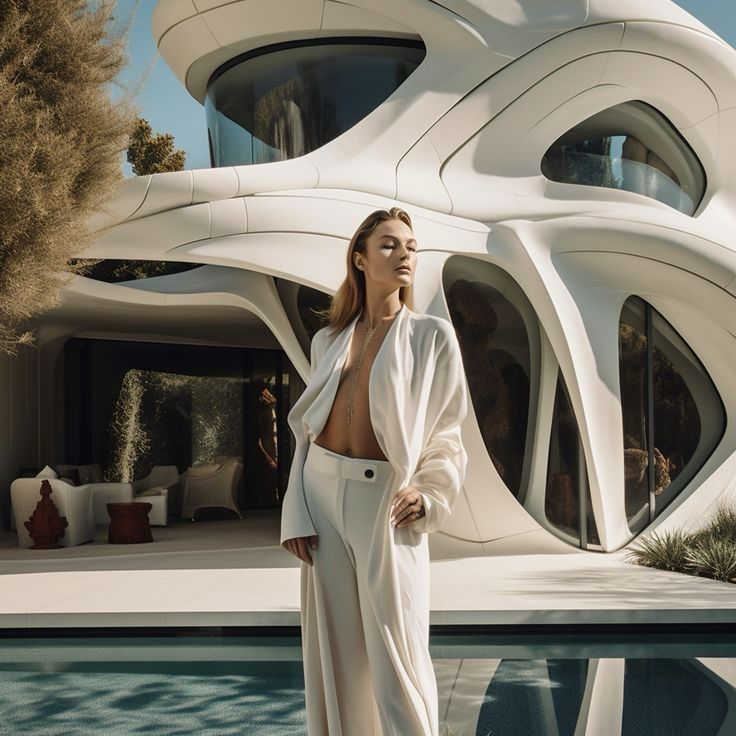
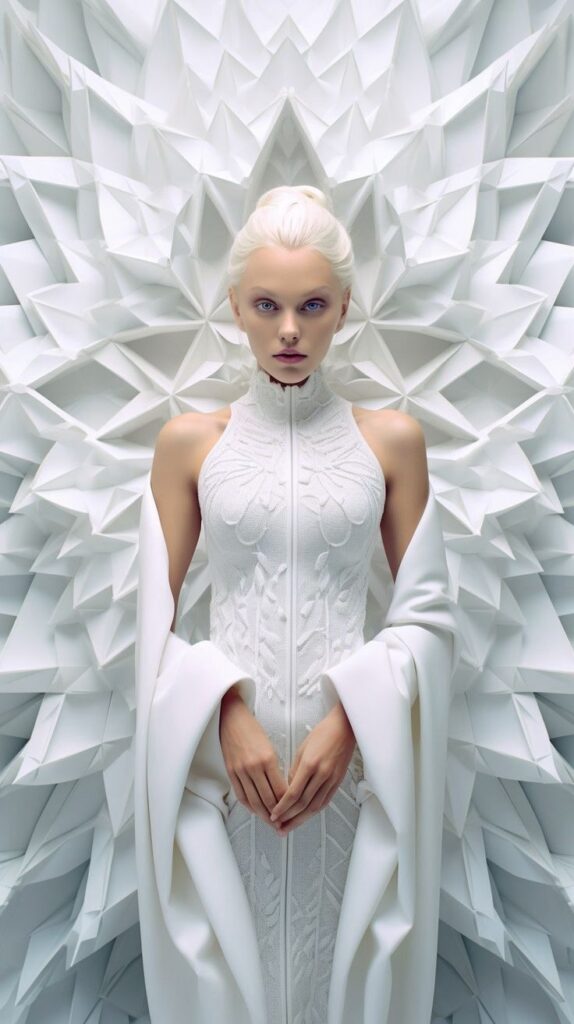

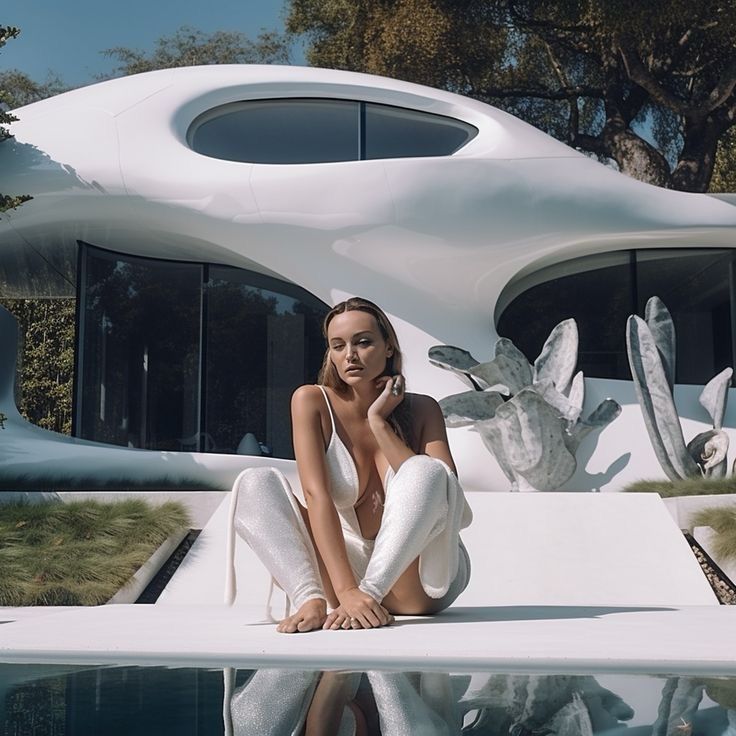
Models interact with virtual accessories, backdrops and effects in real-time. Biometric feedback captured during shoots can also inform AI to automatically suggest edits, composites and stylizations. Virtual fittings and online storefront visualization rely on AR. As technologies advance, the lines between real and simulated continue blurring. Fashion photography seamlessly weaves realism with surreal digital enhances to captivate audiences and push creative boundaries. Technological fusion paves the way for an immersive future.
Tip: Embrace AI as a collaborative partner in the creative process, allowing it to enhance human intuition with data-driven insights.
As AI continues to evolve, we can expect even more sophisticated applications in fashion photography. The potential for AI to not only streamline workflow but also to push the boundaries of traditional aesthetics is immense, promising a future where technology and artistry coalesce to produce groundbreaking visual content.
Augmented Reality for Interactive Fashion Experiences
The integration of Augmented Reality (AR) in fashion photography is revolutionizing the way consumers engage with fashion. By overlaying digital information onto the real world, AR creates immersive and interactive experiences that are transforming traditional photoshoots.
Fashion brands are leveraging AR to allow customers to virtually try on outfits, thus bridging the gap between online shopping and the in-store experience. This not only enhances customer satisfaction but also reduces return rates due to poor fitting.
Tip: When implementing AR in fashion photography, focus on creating seamless and user-friendly experiences to maximize customer engagement and brand recall.
Virtual Fittings and Digital Wardrobes
The fashion industry is witnessing a transformative era with the advent of virtual fittings and digital wardrobes. These innovations are not only revolutionizing the way consumers shop but also how they interact with fashion brands.
Virtual fittings allow customers to try on clothes digitally, using advanced body scanning and 3D modeling technologies. This not only enhances the shopping experience but also significantly reduces the rate of returns due to sizing issues. Digital wardrobes, on the other hand, offer a sustainable and convenient way to manage and plan outfits without the physical constraints of a traditional closet.
- Enhanced customer engagement
- Personalized shopping experiences
- Reduction in carbon footprint due to fewer returns
The New Aesthetics: Emerging Visual Styles in Fashion Photography
Retro Revival: Nostalgic Influences in Modern Shoots
Vintage aesthetics from decades past are inspiring new trends in fashion photography. Photographers are drawing influence from nostalgic eras to create a retro-futuristic blend. Shoots channel the glamour of 1950s studio portraits through bold colors, exaggerated silhouettes and classically poised stances.
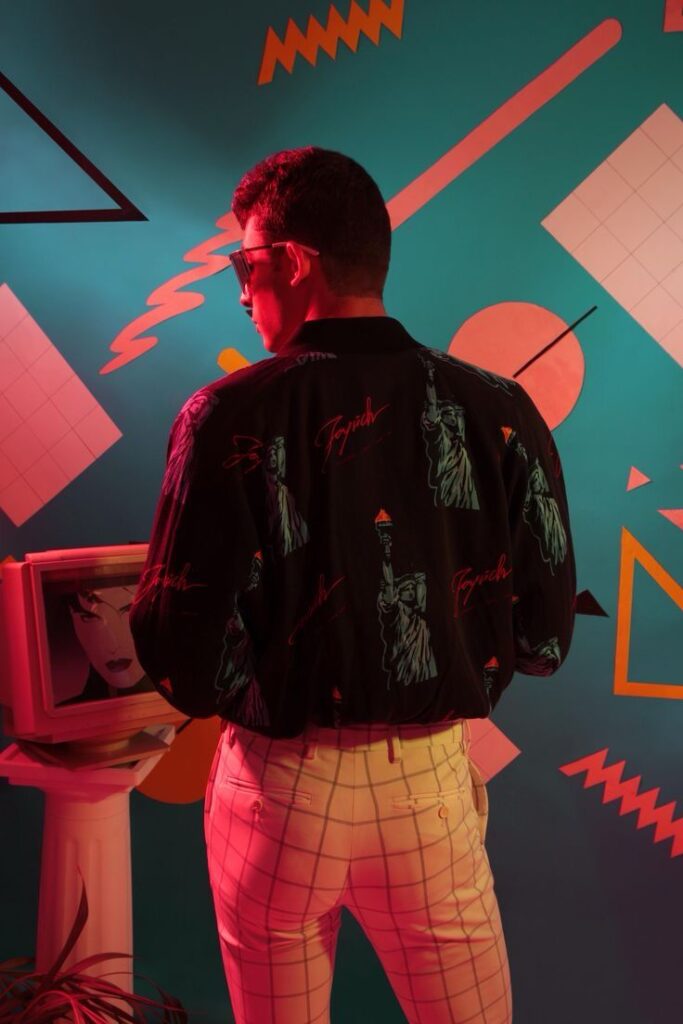


1970s freestyle is translated with film grain textures, natural backdrops and relaxed silhouettes. 1980s pop attitudes shine through in graphic color blocking, power suits and synthwave backdrops. 90s indie culture surfaces in lo-fi self-portraits, layered textures and daydreaming poses. Models take on period-specific styles for editorial spreads. Nostalgia sells, appealing to audiences longing for simplicity from the past. By resurrecting nostalgic eras, photographers comment on present trends while sparking new appreciation for styles that feel freshly revived through a modern lens.
Fashion photographers are experimenting with a mix of old and new techniques to create images that feel both familiar and novel. The use of film cameras, classic lighting setups, and period-appropriate props adds authenticity to the shoots, while modern post-processing techniques infuse the images with a current twist.
- Film grain and muted color palettes evoke the ’70s and ’80s
- High-contrast black and white images pay homage to the ’50s and ’60s
- Stylized poses and backdrops recall the glamour of the ’20s and ’30s
Embrace the past to create something uniquely contemporary. The juxtaposition of retro elements with modern sensibilities can result in visually stunning and emotionally resonant imagery that resonates with a wide audience.
Bold Color Palettes and Unconventional Compositions
The fashion photography scene of 2024 is witnessing a vibrant shift towards bold color palettes and unconventional compositions. These elements are not just about aesthetics; they convey moods, emotions, and narratives, setting the tone for the entire photoshoot.
Italics and exaggerated angles are being employed to challenge the viewer’s perception, creating a visual dialogue between the image and its audience. The use of color is strategic, with each hue selected to evoke a specific response or highlight a particular aspect of the design.
- Vibrant Reds: Passion and Energy
- Cool Blues: Serenity and Trust
- Sunny Yellows: Optimism and Joy
Embrace the unexpected. The most memorable images often come from breaking the mold and daring to be different.
This trend is not just about being loud and flashy; it’s a calculated move towards individuality and expression. Photographers are crafting scenes that are as unique as the fashion they showcase, ensuring that each photograph tells its own compelling story.
Minimalism and the Art of Simplicity

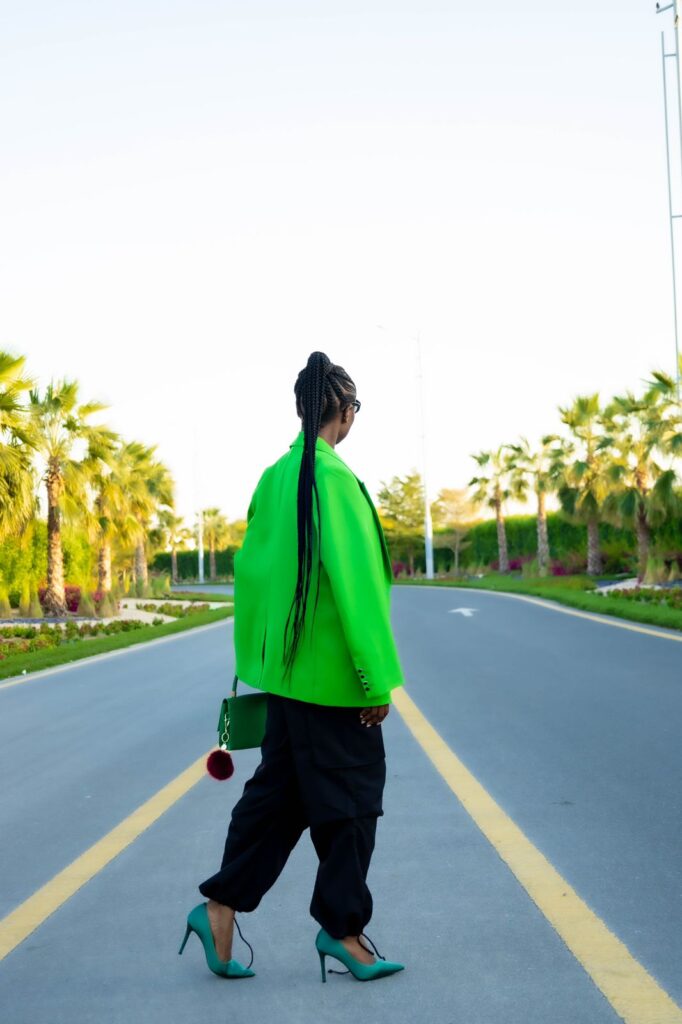
Minimalism has emerged as an influential aesthetic in recent fashion photography. Photographers are embracing simplicity, negative space and understated elegance. Gone are cluttered multi-location productions, instead introspective solo portraits against plain backdrops let the clothing stand on its own. Models adopt relaxed poses that enhance the natural flowing shapes of the pieces. Curated color palettes focus on muted neutrals with the occasional accent hue.
Digital touch-ups are minimal if at all, celebrating authenticity over artificially heightened allure. Less is truly more, as sparse imagery allows viewers to fill in the blanks. Details become the star through clean wide shots. Conceptual atmosphere through subtle lighting enhances the aura of nuanced sophistication. Negative capability inspires perception in this new era that trims the superficial.
Tip: Always remember that in minimalism, every detail counts. The deliberate choice of a single accessory or a subtle texture can speak volumes in a minimalist composition.
The art of simplicity in fashion photography isn’t just an aesthetic choice; it’s a philosophy that reflects a conscious decision to focus on what truly matters. It’s about creating impactful images that resonate with clarity and purpose.
Narrative Storytelling: Crafting Stories Through Fashion Frames
Cinematic Techniques in Fashion
Fashion editorials are increasingly adopting cinematic techniques to create compelling narratives that resonate with viewers. By using dynamic lighting, dramatic compositions, and storytelling elements, photographers are able to produce images that are not just visually stunning but also emotionally engaging.
Storyboarding is one key technique borrowed from the film industry. It involves planning out each shot to ensure that the final sequence of images tells a cohesive story. Here’s a simple breakdown of the process:
- Conceptualizing the narrative
- Sketching the key frames
- Deciding on the lighting and color schemes
- Directing models and arranging sets
- Capturing the shots with cinematic precision
Embrace the power of visual storytelling by treating each photograph as a scene from a larger narrative.
Another aspect is the use of depth of field and camera movements to mimic the look and feel of motion pictures. This approach not only enhances the aesthetic quality of the photographs but also invites the audience to immerse themselves in the world of the fashion editorial.
Documentary-Style Campaigns and Real-Life Inspirations
Fashion photography is venturing beyond the studio and into the streets, capturing the raw and unfiltered essence of real life. Documentary-style campaigns are gaining traction, offering a lens into the authentic experiences and stories of individuals. These narratives often resonate deeply with audiences, as they reflect a more relatable and human side of fashion.
- Brands are increasingly leveraging this approach to forge a stronger connection with their consumers. Here’s a glimpse into the key elements that make these campaigns compelling:
- Authenticity in storytelling
- Engagement with real-world issues
- Emotional resonance with the viewer
Embrace the imperfect and spontaneous moments that documentary-style photography affords. It’s these unscripted instances that often capture the heart of the story.
The trend also underscores the importance of inclusivity and diversity, as brands showcase a wide spectrum of individuals, each with their own unique narratives. This shift not only enriches the visual landscape of fashion but also promotes a more inclusive industry.
Related Article: Food photography Trends
Fashion as a Medium for Social Commentary
Fashion photography is increasingly being used as an impactful medium for social commentary and activism. Photographers are harnessing the power of visual storytelling to raise awareness of important social, political and environmental issues. Images feature provocative poses and symbolic use of clothing, hair, makeup and locations to convey specific narratives around themes like diversity, women’s rights, sustainability and global issues.
Models from varying backgrounds represent the faces of change, while conceptual fashion as protest or propaganda pieces make statements. Photographers collaborate with brands and magazines to broaden platforms and amplify impact. Series tackle challenging subjects with emotional yet compelling aesthetics designed to spark thoughtful discussions. Achieving the double goal of selling products and furthering crucial conversations, this merging of art and advocacy showcases fashion’s potential to both strike visual chords and influence societal progress through considered perspectives presented creatively on its stages.
Here are some examples of fashion photography that has been used for social commentary:
- Edward Enninful’sshoot for British Vogue featuring vaccine passports and social distancing commentary on the pandemic.
- Nick Knight’s Dazed magazine images critiquing fast fashion culture and environmental impact.
- Melodie Jeng’s portraits celebrating body positivity and diversity.
- Micaiah Carter’s black and white images addressing racial injustice and Black Lives Matter movement.
- Juergen Teller’s controversial images for GQ Germany addressing cultural appropriation in fashion.
- Langenberg + Pagel’s photos challenging gender stereotypes through androgynous and fluid styling.
- Mário Testino’s portraits honouring LGBTQ identities and same sex relationships.
- David Sims’ photos documenting the refugee crisis for Refinery29 and raising awareness.
- Daniel Riera’s images tackling socio-political issues in Latin America for Numero Homme.
- Zoë Ghertner’s series empowering teenage girls and addressing mental health on fashion’s impact.
The impact of such visual storytelling is not only felt in the fashion industry but also resonates across various media, influencing public opinion and policy. As we move forward, the role of fashion photography in social commentary is only set to grow, making it an indispensable tool for advocates and activists alike.
Global Inspirations: Cross-Cultural Influences Shaping Fashion Photography
Fusion of Traditional and Contemporary Elements
The fashion photography landscape is witnessing a captivating blend where the richness of traditional attire meets the sleekness of contemporary design. This fusion not only pays homage to cultural heritages but also reinterprets them through a modern lens, creating a visual dialogue between the past and present.
- Designers are increasingly collaborating with artisans to incorporate authentic craftsmanship into high-fashion contexts. This synergy is not only aesthetically pleasing but also supports sustainable practices and cultural preservation.
- Here are some ways in which this trend is manifesting:
- Juxtaposition of classic textiles with futuristic accessories
- Revival of ancient jewelry designs in modern photoshoots
- Blending of traditional motifs with cutting-edge fashion technology
Embrace the fusion trend by being mindful of cultural sensitivities and striving for authenticity in representation. It’s not just about the visual impact, but also about telling a story that respects and celebrates the origins of these elements.
Spotlight on Emerging Markets and Local Designers
The fashion industry is increasingly turning its lens towards emerging markets, recognizing the untapped potential and rich cultural heritage that local designers bring to the global stage. By showcasing these talents, fashion photography not only diversifies its aesthetic but also contributes to the economic empowerment of these regions.
Emerging markets, such as those in Africa, Southeast Asia, and Latin America, are bursting with creativity and innovation. Designers from these areas often infuse traditional craftsmanship with modern design, resulting in unique and compelling fashion statements. The spotlight on these markets is not just about the garments but also about the stories they tell and the communities they represent.
- Sustainability and ethical production are often at the heart of these local brands, resonating with global consumers seeking authenticity.
- The fusion of indigenous techniques with contemporary styles creates a vibrant tapestry of designs that challenge conventional fashion norms.
- Collaborations between international brands and local designers can serve as a powerful catalyst for cultural exchange and mutual growth.
Embracing local designers from emerging markets is not just a trend; it’s a movement towards a more inclusive and equitable fashion industry.
Cultural Appreciation vs. Appropriation in Fashion Imagery
In the delicate balance between cultural appreciation and appropriation, fashion photography plays a pivotal role. It’s essential to approach cultural elements with respect and understanding to avoid the pitfalls of appropriation. By doing so, photographers and brands can showcase diverse traditions and heritage in a way that honors their origins.
- Recognize the source culture and its significance
- Collaborate with cultural consultants or insiders
- Ensure representation in the creative process
Tip: Always seek permission and engage in dialogue with members of the culture you wish to represent. This not only fosters respect but also enriches the creative work with authenticity.
When executed with sensitivity, fashion photography can be a powerful tool for cultural exchange. It can educate audiences and celebrate the beauty of the world’s diverse tapestry without crossing the line into exploitation.
Embracing the Future of Fashion Photography
Fashion photography is an ever-evolving medium that is constantly pushing creative boundaries. As technology develops and culture changes, new trends and styles will continue to emerge. Photographers will integrate more advanced technologies like virtual reality, augmented reality, artificial intelligence, and 3D modeling to immerse audiences in imaginary fashion worlds. Sustainability will remain a driving force, experimenting with eco-materials and carbon-neutral initiatives.
Multimedia experiences will blend photography, video, interactive elements and music. Diverse identities and underrepresented communities will take center stage to advocate for true inclusivity. Global impacts like climate change will inspire conceptual narratives. Collaborations between established and emerging talent will crossover genres. Documentation of trends will catalyze progressive societal conversations. While nostalgia may look back, the innovative vanguards of fashion photography are determinedly focused on realizing uncharted visual futures. An open embrace of constant reinvention will ensure the industry remains cutting-edge.
Share
Frequently Asked Questions
What is the most popular style of photography?
Portraiture has long been one of the most popular genres of photography. Images of people allow for a personal connection and range of creative expression.
What is the fashion colors for 2024?
the top fashion colors for 2024 will be soft pastels, earth tones, and deep jewel tones. Pastel pink, mint green, lilac and sky blue will complement natural shades like sand, ochre and olive.
What are the 4 different types of fashion photography?
There are generally considered to be four primary types of fashion photography: editorial, advertising, portrait/lifestyle, and runway/catwalk.
What are some of the emerging visual styles in fashion photography for 2024?
Emerging visual styles include a retro revival with nostalgic influences, the use of bold color palettes and unconventional compositions, as well as a renewed appreciation for minimalism and simplicity in imagery.
How is narrative storytelling being incorporated into fashion photography?
Narrative storytelling is being woven into fashion photography through cinematic techniques in editorials, documentary-style campaigns that draw inspiration from real life, and by using fashion as a medium to comment on social issues.
What impact do global inspirations have on fashion photography?
Global inspirations are shaping fashion photography by introducing a fusion of traditional and contemporary elements, spotlighting emerging markets and local designers, and navigating the fine line between cultural appreciation and appropriation in fashion imagery.

